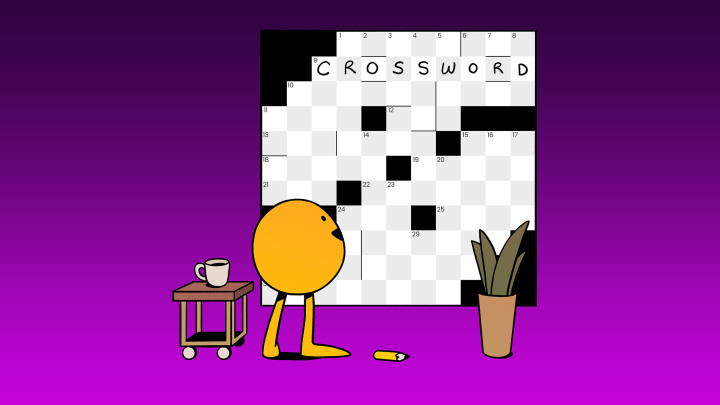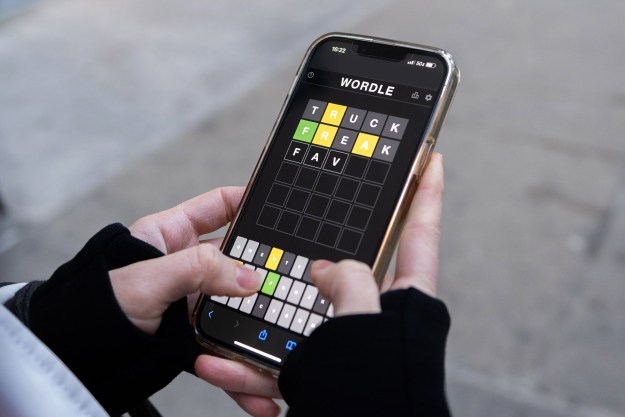
If you’ve added puzzle games like Wordle and Connections to your routine in the past year, you might have another daily obsession coming your way. Puzzmo is a new platform that brings the idea of a newspaper puzzle page to a responsive web page that works across devices. Players can sign up to join the free platform today, which also features a $40 annual subscription option that unlocks bonus features like experimental games and leaderboards.
The ambitious new project is a collaboration between Orta Therox and Zach Gage, a game designer who’s gained popularity over the years with mobile titles like Knotwords and Good Sudoku. His latest project has been in the works for years, and it acts as a sort of one-stop shop for Gage’s puzzle catalog that looks to beat popular hubs like The New York Times at their own game.
Ahead of its soft launch today that enables players to sign up for a waitlist, Gage took me on a tour the platform and dove into the philosophy behind it. The idea isn’t just to create another web game hub in a sea of them, but rather a definitive home for puzzle lovers that combines the lightning in a bottle phenomenon of games like Wordle with community features that drive some of today’s most popular games. It’s a seemingly obvious solution to a problem even some of gaming’s biggest power players have yet to crack.
Your one-stop for puzzle games
Puzzmo is a free web page that responsively scales to cleanly display on tablets and mobile devices, but the twist is that it’s structured like a magazine page. When players log in, they’ll see a selection of puzzle widgets laid out in columns. Clicking into one will open that day’s puzzles, and any progress made will be displayed when navigating back to the homepage. That replicates the experience of solving a newspaper’s puzzle section and seeing the results memorialized in pencil. It doesn’t just include some existing games by Gage like Really Bad Chess, but a selection of new games too, with more to be added over time.
When dreaming up exactly how Puzzmo might work, Gage was trying to solve multiple challenges at once. He wanted to make a platform that made it as easy as possible to not only start playing a game, but to dive into a totally new one too. To accomplish that, he looked to a secret weapon that print media still held over most game websites.
“I thought back and was like, my mom doesn’t care about games — I mean, she likes my games, but she doesn’t care about games,” Gage tells Digital Trends. “But growing up, she tried new games. And where did I see that? Well, it was in the newspaper, because she played the crossword. But she didn’t just play the crossword; she played other stuff. I think that was because she’d do the crossword and then the other stuff was just there. And after a month of it being there, you get comfortable with it and think ‘eh, I’ll give it a shot!’ Even companies that are making newspaper game pages on the internet are not taking this aspect of the paper that is crucially important.”

At launch, Puzzmo features six games. Three of those are existing Gage games: Really Bad Chess, TypeShift, and SpellTower. The latter two are easy to understand word games that take no more than a few minutes to complete each day. On top of that, the launch version of Puzzmo brings three brand new titles. Flipart is a satisfying puzzle game that has players trying to fit a handful of shapes neatly into a rectangular frame. Wordbind is an anagram game that’s currently listed as an experiment for paid subscribers only.
For those familiar with Gage’s previous work, the most exciting addition is his own spin on the classic crossword puzzle. Dubbed Cross|Word, the game iterates on the classic puzzle in some key ways. For one, lines on the board denote how many separate words are in an answer, which makes it much easier to figure out long, tricky answers. Each clue also comes with a hint that’s more straightforward (when I get stuck on “Dough that’s inedible?” I reveal the more straightforward “Dollars, pounds, yen, etc”). Gage explains that the goal of that isn’t to make puzzles easier, but to help players better understand “crossword culture” and the language of hints logic. As an added bonus, it helps level the playing field for older players who might not be as up to date on some of its current pop cultural clues.
“The crosswords that we’re running are not just good crosswords, but really modern ones that reflect how people are these days,” Gage says. “We’re trying to come up with something that feels like it’s not about golf and yachts and plays. We want to be able to do something that’s more rooted in contemporary culture. And that makes our hint button serve a dual purpose, because if you’re new to crosswords, you can use these hints. But if you’ve been solving crosswords for a long time, we have a lot of content that you might not be familiar with, so these hints are helping you access this newer culture.”
Gage plans to bring even more games to the platform over time, including hits like Knotwords and Good Sudoku. Games won’t rotate in and out either; the selection will just keep growing over time.
A puzzle community
Culture is a key concept that comes up a few times as Gage tells me about Puzzmo. The team behind it didn’t simply want to create a solitary experience that placed players in a vacuum as they solved the daily crossword. Rather, Gage wanted to take some ideas from popular multiplayer games and imagine how they could work in the context of a puzzle hub.
“If you play Call of Duty or Roblox or Minecraft, these places are designed to be community spaces where you go and hang out with your friends,” Gage says. “And if you’re the kind of person who plays the crossword or Wordle every day, those games have been popular enough that they’ve created ad hoc communities, but there isn’t really a place for people who like those games. So we started thinking about what that kind of place would look like.”
As a result of that thinking, Puzzmo includes several features that even giants like The New York Times haven’t cracked. For instance, the platform includes global leaderboards for every game. A feed in the top-right side of the page shows different accolades from the community, like what user got the highest scoring word on SpellTower the day before. There’s even a chat function that lets players talk to their friends while they play.
Perhaps the most exciting aspect is its multiplayer integration. Players can form groups on the platform that allow them to track their collective stats. Even more impressive is that every game features instant live multiplayer. In a guided demo, Gage opened up the day’s Flipart puzzle. With the click of a button, he generated a link and sent it over to me. Upon opening it, I was instantly dropped into Gage’s puzzle, where we could both click around together. It’s a perfect trick for couples who want to work on a digital crossword puzzle together without fighting over the phone.
Each of those social features makes Puzzmo feel like a logical home for puzzle game fanatics following Wordle’s eye-opening success. It takes everything that makes Gage’s bite-sized games so appealing and unites them into an ingenious newspaper format that’s perfectly built to be a breakfast companion. Don’t be surprised if The New York Times copies some of its answers a few months from now.
You can sign up to join Puzzmo starting today. It’s free to start playing, though players can unlock extra features with an annual subscription.
Editors' Recommendations
- NYT Connections: hints and answers for Saturday, April 27
- Wordle is now playable on New York Times Crossword app
- Wordle is getting its own board game adaptation from Hasbro
- Today’s Wordle answer changed due to Roe v. Wade
- Tired of Wordle? Knotwords is your next daily obsession





